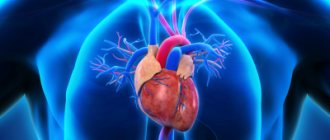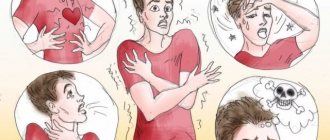Characteristics of agoraphobia
Translated from ancient Greek, agoraphobia means fear, market, bazaar.
Wikipedia answers the question: “agoraphobia - what is it” as follows. Agoraphobia is, first of all, a fear of open doors or space. Agoraphobia is a mental disorder in which a person is afraid of large numbers and crowds of people.
The manifestation of the fear of agorophobia is unconscious in nature and often appears when walking alone on the street, for example. Agoraphobia is a kind of defensive reaction of the body. Today, such fear as agorophobia characterizes a person as emotionally traumatized. Various types of disorders and mental illnesses accompany the process of agorophobia.
Agoraphobia was first described by a physician and psychiatrist of German origin, Karl Westphal.
At the very beginning, agoraphobia referred to the fear of open space. This concept meant the fear of the market, or market place, because in these places there are always a huge number of people.
Prevention of agoraphobia
There is currently no way to prevent agoraphobia. However, following some life principles and being attentive to yourself will help you avoid the disease.
— Conflict situations that may provoke the onset of the disease should be resolved as quickly as possible. — It is imperative to analyze yourself and your actions in society in order to avoid negativity and, as a result, signs of agoraphobia. — Depression and stress lead to illness as a result. Be reasonable, do not give in to provocations. - Be sure to take up some hobby. It can be anything - dancing, drawing, embroidery, clothing (landscape) modeling. Choose what you like. - Walk a lot, for a long time, on foot and in any weather.
Finally, I would like to say: all our diseases are only from nerves. Take care of yourself and your nervous system!
Provocateurs of fear
The category of people who cannot leave the house is classified as agoraphobic. The main provocateurs of the panic reaction of agorophobia are:
- visiting public places. These could be cinemas, markets, or shopping centers, shops;
- attending public events, such as concerts or promotions;
- even traveling on public transport can cause an undesirable reaction and develop into agorophobia;
- relaxing in a park or in nature also causes a panic attack.
Causes of agoraphobia
Agoraphobia affects suspicious, honest, perfectionist (what is this?), self-criticism, pedantic (what is this?), and ambitious people.
They rely on the mind, and, as a rule, are not friends with their feelings and body - they do not hear them.
That is why bodily manifestations cause such great fear in them.
There are 3 versions of the occurrence of the disorder:
It was written above that agoraphobia is a consequence of panic attacks.
To be more precise, the cause is fear from the panic experienced. And, from the point of view of cognitive psychology, it is precisely this critical interpretation of the attack that subsequently gives rise to the fear of leaving the house. If a person were erudite and knew in advance what a panic attack was (its safety), then the likelihood of a phobia would be reduced to zero.
In psychoanalysis, this phobia indicates the presence of a mental conflict between sexual and aggressive drives.
The inability to solve it provokes severe mental stress, which manifests itself in the body in exactly this way. For example, a person simultaneously craves recognition, wants to be the center of attention, but is afraid of being rejected and ridiculed.
- In the biological concept, anxiety-phobic attacks are a consequence of a malfunction of the brain - its parts responsible for regulating anxiety.
Special features of agoraphobia
It is worth noting that agarophobes are more afraid not of purely crowded places, but of the situation in which they can find themselves with so many people. The very thought of getting into a situation where nothing depends on you, of feeling your own helplessness, causes fear. Agoraphobia manifests itself in fairly serious panic attacks.
People aged 24-30 years are at greatest risk for agorophobia. According to statistical studies, agorophobia develops most often among the fair sex. They are more likely than men to succumb to a type of psychological disorder such as agorophobia.
It is necessary to emphasize that agoraphobia does not affect a person’s well-being or physical health. His intellectual abilities are in the same state.
What is agoraphobia?
Author Alexandra Balan-Senchuk
09.01.2020 13:36
Health » Health and prevention » Psychotherapy
Agoraphobia is a phobia that manifests itself as a fear of open spaces, large crowds of people, crossing wide streets and squares, being in places that cannot be left quickly and unnoticed by others, etc. Appears as a result of fears associated with people and emotional injuries received during personal or social contacts.
0 shared
Agoraphobia is based on the presence of fear of situations, which are grouped into five categories:
- public transport
- open spaces
- public places
- crowds or queues
- being away from home in general
Fear or anxiety must occur in at least two out of five situations to meet the criteria for agoraphobia.
Symptoms
The physical symptoms of agoraphobia resemble those of anxiety or a panic attack. These may include:
- Irregular breathing
- Chest pain
- Shiver
- Dizziness
- Increased sweating
- Nausea
Cognitive symptoms of agoraphobia are related to thoughts about the situation or symptoms and include:
- Feelings of shame and embarrassment that appear in society
- Fear of death or suffocation
- Fear of not being able to escape in the event of a panic attack
- Fear of madness
- Fear of losing control
- Fear of attracting attention
- Anxiety about not being able to function or survive alone
- General anxiety or fear
Causes
It is believed that the occurrence of agoraphobia is associated with biological, psychological and environmental factors. Research has shown some familial clustering of agoraphobia. The heritability of agoraphobia is estimated to range from 48 to 61%. This means that the genetic contribution is moderate and the influence of environmental factors has a greater influence.
Personal factors that influence agoraphobia include introversion/extraversion, anxiety sensitivity, and dependency. Extraversion is negatively associated with agoraphobia but not with panic disorder. Anxiety sensitivity or the belief that anxiety symptoms are dangerous predict panic disorder and agoraphobia without panic attacks. Dependent and avoidant personality traits may predict agoraphobia.
One general theory about how agoraphobia develops is through catastrophic interpretations. Healthy people interpret certain physical sensations as normal or not disturbing. These same sensations are interpreted as inevitably dangerous for a person with panic disorder. For example, an increased heart rate after climbing stairs may be interpreted as a sign of an impending heart attack. This theory suggests that such patients may find significant relief by changing the way they interpret bodily sensations.
Treatment
Cognitive behavioral therapy (CBT) is the most commonly used form of therapy for agoraphobia. The goal of CBT is to teach skills to help you cope with anxiety, change distorted thinking patterns, and return to normal functioning.
For patients who have difficulty leaving the house, alternatives to appointments are available. Some options are meeting at home, conducting sessions over the phone, or using a computer. In more severe cases, hospital treatment may be required.
Exposure therapy is another widely used treatment method, as is applied relaxation, where the patient works to regain the ability to relax. Agoraphobia can be treated with antidepressants and anxiety medications. Selective serotonin reuptake inhibitors are often prescribed for panic disorder with agoraphobia.
Photo: twitter.com
Discuss
Topics: phobias health agoraphobia psychiatry
Causes of the disease
It is important to understand the main reasons that lead to such a harmful human condition as agorophobia. Psychotherapists practice an effective course of treatment for agorophobia, which lasts only a few sessions. However, during observations of agorophobia therapy, specific reasons were not identified that provoked the emergence of a panicky fear of going out.
This issue is still considered controversial today, because experts have not come to a consensus. However, it is possible to note the influence of several factors of agorophobia:
- The psychological situation in which a person finds himself has a significant significance for agorophobia. This reason includes car accidents and drunken fights. If a person witnesses, for example, a terrorist attack, this also leaves its mark on his mental state. Thus, a feeling of fear arises that danger awaits a person outside the doors of his home, or a situation where he will find himself helpless;
- breadth of imagination, vulnerability in society, excessive emotionality influences the further manifestation of this disorder of agorophobia;
- the presence of panic attacks, disorders, social phobia influence the development of the personality disorder agorophobia;
- strong fear accompanies a person in situations where orientation in space is lost. For example, we can include cases when a person literally gets lost in a crowd and cannot determine his location.
Due to various physical or psychological factors, the development of the psychological disorder agorophobia can be observed. In order to get rid of the manifestations of agorophobia, you should visit a psychotherapist.
Treatment of agoraphobia
Before treating agoraphobia, a psychologist diagnoses the person’s condition. If signs of the condition, behavioral symptoms and internal components become apparent, then the psychologist moves on to treatment.
Treatment generally involves a combination of psychotherapy and medications (if required). Drug treatment is carried out as follows:
- Antidepressants and tranquilizers. They are included in the therapy of a person who is susceptible to panic attacks.
- Monoamine oxidase inhibitors or tricyclic antidepressants.
- Benzodiazepines (anti-anxiety drugs) are prescribed to reduce anxiety. They are addictive in large quantities.
- Neuroleptics are prescribed when delusional inclusions occur in a patient.
Psychotherapy is actively used, which is aimed at creating a desire to overcome one’s own problem. First, there is persuasion, suggestion, consideration of the situation in which a person must see himself and the real state of affairs. After understanding and the desire to overcome one’s own fears arise, exercises are carried out on behavioral models that will help in any stressful situation. Cognitive, behavioral and rational-emotive psychotherapy, as well as hypnosis, are actively used.
Cognitive-behavioral psychotherapy helps in understanding the situation and taking actions that are beneficial to the person. First, a person studies the situation in which he experiences fear, identifies the triggers that cause panic, studies and finds solutions to eliminate them. In the second stage, he develops skills and behavioral patterns that will help him get out of any similar situation.
Hypnosis is used in therapy when it comes to deep-seated fear. A specialist puts a person into hypnosis, after which he changes subconscious beliefs.
Auto-training has a beneficial effect - self-convincing oneself of the positive outcome of any event.
Symptoms of fear of open doors
When faced with a psychological disorder, experts identify different symptoms of agorophobia. After all, emotional stress also affects the functional functioning of internal organs. Spasms occur in different areas of the body.
Severe anxiety provokes a rapid heartbeat. With agoraphobia, a person feels:
- he loses control over himself, the actions he performs;
- Agoraphobe suffers from rapid heartbeat and pulse. Breathing becomes difficult;
- an attack of agorophobia can last for 10 – 15 minutes;
- During agorophobia, in particular with severe panic, a person feels dizzy. Cases of fainting occurring due to agorophobia are not uncommon;
- the psychological disorder agorophobia is characterized by attacks of nausea and vomiting;
- during a period of severe agorophobia, a sharp release of adrenaline into the blood is observed;
- a person feels the approach of death, panic fear for his life;
- the body trembles, a large amount of sweat is released due to agorophobia.
Causes
The causes of agoraphobia have not yet been fully determined. It has been established that agoraphobia, along with other anxiety-phobic disorders, has a genetic basis. A number of studies have found that about 20% of people suffering from agoraphobia have relatives with similar symptoms.
According to the data obtained, agoraphobia is still a psychogenic disease, that is, its occurrence is based on psycho-emotional stress.
Sometimes the appearance of the first signs of the disease is preceded by depressive symptoms.
It has been established that people who are faced with:
- panic separation from parents (for example, in a kindergarten, when parents forcibly leave the baby, do not listen to his emotions, believing that the child does not understand anything yet);
- or with excessive parental care.
Agoraphobia is often a kind of unconscious defense mechanism. A person in a certain situation received psychological trauma, and after that his psyche tries to protect him from such situations.
The panic attack itself can occur either in a completely calm environment, not accompanied by emotional or physical stress, or against the background of intense physical activity or in connection with a traumatic situation. The latter may include separation or death from someone close, an accident, an illness, the first acquaintance with narcotic substances, or the early postpartum period.
Diagnostic measures
During a visit to a psychotherapist, the specialist asks the patient to talk about his feelings, to convey in words the emotional state in which he is. The process reveals the presence or absence of other psychological diseases.
The following criteria for agorophobia are distinguished by which the patient’s health status is assessed:
- anxiety that occurs when being in crowded places. What matters is the actions he takes. In most cases, he runs away, trying to quickly get into comfortable conditions;
- anxiety when further visiting public places due to agorophobia.
Treatment
Treatment of agoraphobia differs depending on whether signs of panic disorder are present in the clinical picture of the disease or not.
If agoraphobia is not accompanied by panic disorder, then psychotherapy alone can be used.
The presence of anxiety is an indication for combined treatment: in this case, panic attacks are eliminated with the help of drug treatment, and in the inter-attack periods they resort to psychotherapeutic and behavioral methods.
Due to the fact that the panic attacks themselves are controlled with medication, patients begin to feel what it is like to be in a problematic situation without alarming symptoms. As a result, the fear of expecting a panic attack decreases and, accordingly, the likelihood of its occurrence decreases.
The drugs that provide the best results in the treatment of agoraphobia are antidepressants. Preference is given to imipramine, desimipramine, clomipramine, and amitriptyline. SSRIs can also be used - fluoxetine, fluvoxamine.
Complete blockade of panic attacks occurs several weeks after the start of drug treatment, but this does not mean that the result has been achieved. It is necessary to continue taking antidepressants for another six months to a year.
And in order to achieve sustainable remission, it is necessary to combine drug treatment with psychotherapy. The best results are achieved by cognitive and psychodynamic therapy. During psychodynamic therapy sessions, children's conflicts and associated psychotraumas are worked through. Cognitive psychotherapy is aimed at correcting pathological exaggerated symptoms, as well as non-life-threatening sensations that arise in certain situations.
A good effect can be achieved with group psychotherapy, as well as if instructed relatives are involved in the process of overcoming agoraphobia. Thanks to the support of someone close to you, it will be easier for a person to cope in stressful situations; he will have confidence that he will be able to control the situation without the help of a doctor. In such conditions, agoraphobia is stopped much faster and more effectively.
Treatment of phobia
To recover from agorophobia, you need to see a psychotherapist. If after the session the diagnosis of agorophobia is confirmed, then the doctor uses two main methods for treatment:
- The first method is to use special medications. Most often these are antidepressants or tranquilizers.
- The second effective method against agorophobia is the use of psychotherapy sessions. Hypnosis also falls into this category.
It is imperative to seek help from a specialist. You will need patience and strict adherence to the basic recommendations. It will take a long period of time to fully recover from agorophobia. But it’s worth it, because after completing the course and many procedures, a person can live a full life.
Self-treatment of the disease
Not every person suffering from agoraphobia decides to seek medical help. Someone tries their best to avoid problematic situations, coming up with various excuses so that others do not find out about their existing psychological problems.
So, is it possible to treat agoraphobia on your own? How to overcome the disorder without seeing a doctor?
- First, you need to reduce the amount of stress in your life as much as possible. If this is not possible, then you need to change your attitude towards existing problems, set your priorities correctly in order to worry less about trifles.
- Secondly, it is worth paying due attention to breathing exercises. You need to learn to breathe deeply and rarely. In this case, the exhalation should be 2 times longer than the inhalation. You need to practice breathing exercises daily, for 5-10 minutes. This technique helps to calm down, relax, and reduce anxiety. It is also necessary to resort to breathing exercises when you find yourself in situations that were previously accompanied by panic attacks. Deep breathing helps cope with anxiety and autonomic symptoms.
- You need to figure out what exactly you are afraid of. This will help you develop a concrete action plan to overcome your fear. Don't run away from situations you fear, don't avoid them. Instead, try again to immerse yourself in an unpleasant environment, not on your own, but together with a person you trust, in whose help you are confident.
Well, if you cannot cope with the disorder on your own, do not refuse the help of a specialist.
I also recommend:
- read the article How to overcome depression on your own;
- take a simple test to determine your anxiety level.
- about the author
- Recent publications
Anna Nikolenko (Zaykina)
The author is a practicing psychiatrist with 11 years of experience. Master of Medicine and compassionate doctor. More information about the author is on this page.
Symptoms of a phobia
The main manifestation of agoraphobia is wave-like fear that occurs in certain situations, which can turn into a panic attack.
With true agoraphobia, patients are critical of growing anxiety and fear, but cannot completely control it. Preserved criticality indicates that the nature of fear is neurotic, and therefore amenable to correction within the framework of psychotherapy and drug treatment. But at the peak of the attack, patients may lose control of themselves, turn to passers-by for help, begin to cry, consciousness may narrow, and the attack may become amnesic.
It is panic attacks that confirm the phobic nature of fear, which a specialist must work with. Moreover, the patient also exhibits all the physiological signs of fear:
- tachycardia;
- nausea, even vomiting;
- increasing sweating (“cold” sweat);
- lack of air, up to asphyxia;
- pain in the heart and chest;
- dry mouth;
- trembling;
- loss of consciousness (fainting).
Starting to panic, the patient may begin to look for “escape routes.” In transport - try to get to the exit by any means. In line - leave your purchases and leave. During prolonged attacks, when anxiety rather than fear dominates, patients can carefully think through routes to the desired place in advance, taking into account the crowded streets.
An obvious sign of agoraphobia is self-confinement in an apartment.
Patients may not leave the house for weeks, ignoring the needs of life. Moreover, agoraphobia may entail the creation of special rituals that help the patient cope with anxiety and fear.
With good financial support, agoraphobia forces people to move to a quieter area. It is noteworthy that there the disease releases them, but does not go away.
As soon as such “cured” people return to a densely populated city, the attacks resume with renewed vigor. In addition, agoraphobia is quite unpredictable: what was a comfort zone today can cause a panic attack tomorrow.
Panic attacks due to illness
They regularly appear in severe cases of the disease and require prompt intervention by a psychiatrist. Characteristics of a panic attack are:
- surprise, sharpness of the attack;
- lack of control;
- feeling of threat to life.
In some cases, panic attacks are accompanied by a fear of going crazy; the surroundings may seem unreal. Panic attacks can manifest themselves at the organismal level: increased anxiety, which is accompanied by non-localized pain.
The picture of a panic attack includes:
- uncontrollable fear;
- pulse surges;
- loss of coordination, unsteadiness of gait;
- a feeling of unreality of what is happening;
- mild cramps;
- stupors;
- involuntary muscle relaxation.
With a clear feeling of unreality, patients may experience a seizure similar to a hysterical one. Patients scream, demand help, cry, and bowel and bladder emptying may occur. The seizure itself may be partially amnesic.
Panic attacks are divided by duration. With a disease such as agoraphobia, the average duration of an attack is 10-12 minutes, but can last up to half an hour. Even after the end of the attack, patients do not feel calm; rather, patients begin to clearly feel the disrupted functioning of the body, attributing these disturbances to fictitious diseases.
However, panic attacks themselves are not dangerous - they never lead to death for organic reasons, but patients can cause harm to themselves through negligence. Therefore, such attacks require immediate psychiatric treatment!
How does a doctor make such a diagnosis?
According to the current classification of diseases, agoraphobia is diagnosed provided that all psychological and physiological symptoms of agoraphobia are primary, that is, not included in the picture of other diseases.
The reasons for fear must be two of the following reasons: public places, large crowds of people, being outside the home and moving alone. And, of course, avoidance of stress factors should be clearly expressed.
Professional diagnosis is also important for distinguishing this disease from other mental disorders.
Diagnostics
How is agoraphobia diagnosed? To identify such a disorder, the psychotherapist asks the patient to report his feelings and general mood. The specialist also finds out whether the patient’s panic state is caused by other mental difficulties.
In addition, agoraphobia is diagnosed according to the following criteria:
- The patient becomes anxious if he or she is in a situation or place where, in case of panic, escape or getting help would be difficult (for example, being in a crowd, traveling on a bus or plane).
- The patient avoids the listed places in every possible way.
- A person stays in such places with particular anxiety.
- The patient can visit these places only with the support of a loved one.
- There is no other disease that can explain these symptoms.
Definition of agoraphobia
It is true to say that, as many situations and objects exist, there are so many fears of them. Indeed, the number of anxiety-phobic disorders is so large that not a single specialist dares to voice a complete list of them. Perhaps the most well-known to the average person is claustrophobia - fear of enclosed spaces . This phobia often arises on the basis of personally experienced negative experiences, for example: after a long stay in the cabin of a stopped elevator, after spending painful hours under rubble.
No less common is the fear of being in the opposite situation: there are people who experience a panicky fear of open space - agoraphobia . In a severe form of the disease, the patient not only becomes unable to work, but also voluntarily locks himself in a “cage”, abandoning the usual normal human existence. At the peak of the disease, an agoraphobe may not leave his home for days; he will choose to be left without the most necessary things: food, medicine, hygiene items, rather than leave his home and walk a few meters to the nearest store.
Some people with agoraphobia lead normal social lives: going to work, shopping in stores, visiting friends. Discomfort occurs in situations where they find themselves in an unfamiliar open place, the territory of which they cannot control. In each individual case of agoraphobia, the safe zone is a concept defined for each patient, including a specific place, acceptable distance, and even the state experienced while staying at a certain point.
In the modern classification of mental disorders , agoraphobia is a general term; it can be conditionally divided into individual specific fears, interrelated and essentially the same as phobias . It often “coexists” with the fear of public speaking. In some cases, along with agoraphobia, a person has social phobia. Most often, this disease is observed in individuals who are prone to panic attacks.
Treatment of the disorder
Important! The course of treatment is prescribed individually, since doctors must understand exactly which drugs and which type of therapy are suitable for a particular patient. Any self-medication is a direct path to complications.
Correction process
Conventionally, agoraphobia includes treatment in three stages, but psychotherapy and drug intervention often occur in parallel.
Stage 1. Diagnosis
Not the fastest and most pleasant stage, but it is this stage that determines the success of future treatment. The patient needs to see general practitioners, as well as obtain opinions from a psychiatrist or pathopsychologist, neurologist and cardiologist.
A physiological examination is important, since on its basis the drug that will be used in the treatment process is selected. The psychologist conducts a general clinical examination to rule out other disorders and prescribe effective treatment for the disease.
Stage 2. Psychopharmacological correction
Treatment is carried out by two groups of drugs (antidepressants and tranquilizers) and lasts from 3 months to six months.
If panic attacks are pronounced in the picture of a disease such as agoraphobia, then the following antidepressants are prescribed, depending on individual tolerance:
- clomipramine;
- paroxetine;
- fluvoxamine;
- fluoxetine;
- sertraline;
From the group of tranquilizers the following are prescribed:
- hydroxyzine;
- meprobamate;
For prolonged panic attacks with seizures and a general unfavorable course of the disease, the following are prescribed:
- alprozolam;
- clonazepam.
Stage 3. Psychocorrection
It makes no sense to describe the principles of work of psychotherapists, but we will mention the most used methods in the treatment of phobias:
- cognitive behavioral therapy (conscious behavior change);
- Gestalt therapy (detection and elimination of the causes of agoraphobia);
- hypno-suggestive therapy;
- rational therapy.
Each direction is unique, but at the diagnostic stage, psychiatrists select the best type of therapy that is suitable for a particular client. It is important to understand that phobic fear of large spaces is a disorder behind which there may be various traumatic causes, which only a professional psychotherapist can find and correct.










